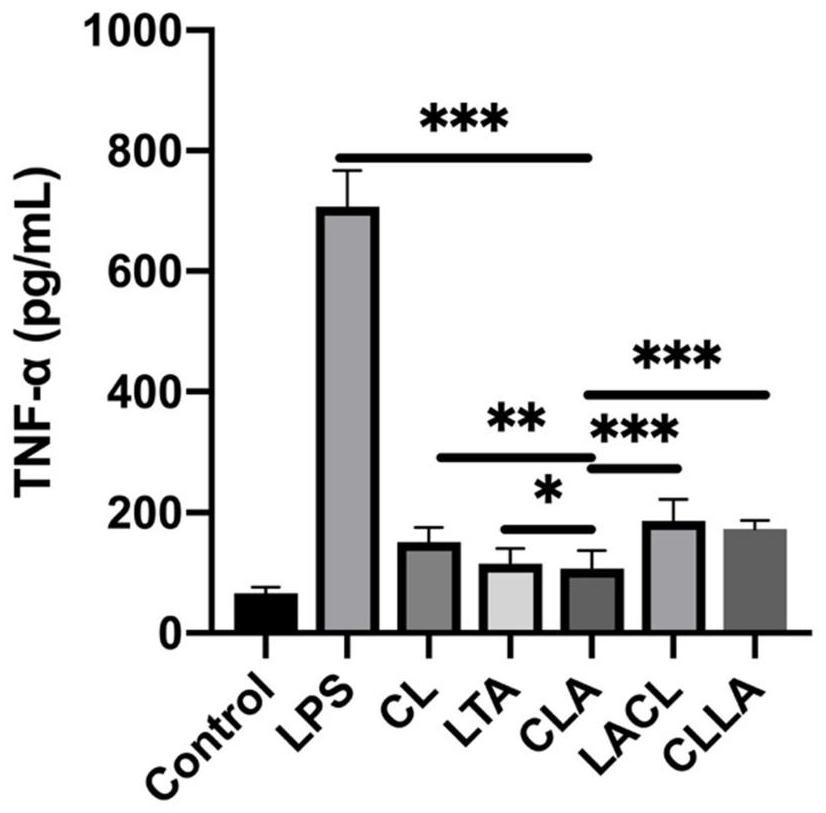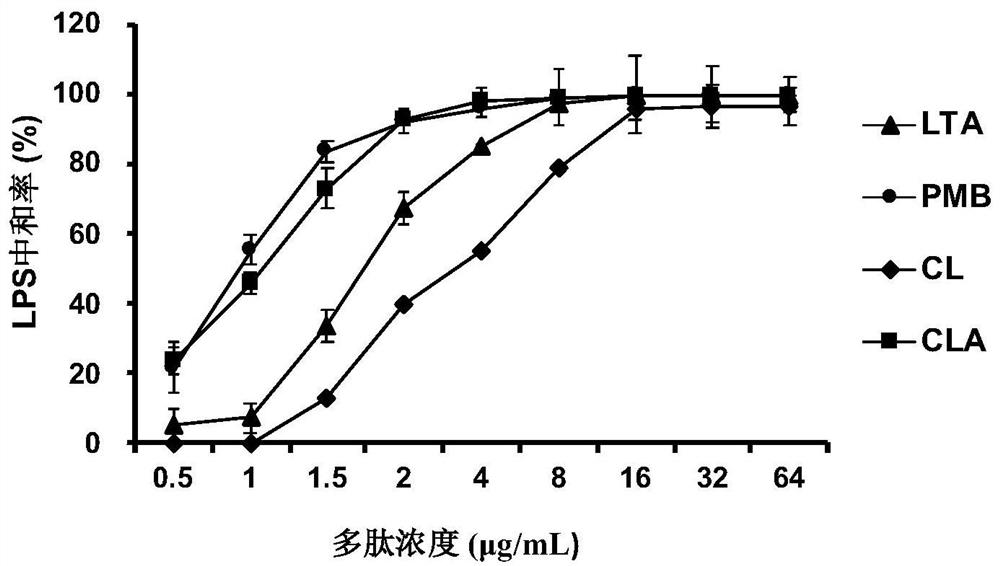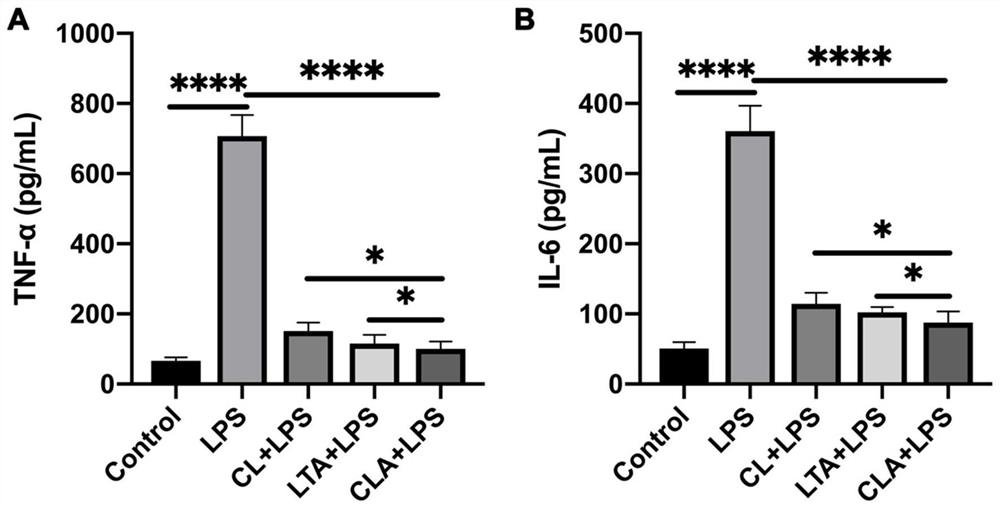Multi-functional hybrid peptide with antibacterial, anti-inflammatory and detoxifying activities and applications thereof
A hybrid peptide and multifunctional technology, applied in the field of protein engineering, can solve the problems of natural bioactive peptides that are difficult to replace antibiotics, increase the difficulty of practical application, and high cytotoxicity, and achieve growth inhibition, good antibacterial effect, and low cytotoxicity Effect
- Summary
- Abstract
- Description
- Claims
- Application Information
AI Technical Summary
Problems solved by technology
Method used
Image
Examples
Embodiment 1
[0051] The preparation of embodiment 1 multifunctional hybrid peptide CLA
[0052] By studying the sequence, structure and the relationship between sequence structure and function of polypeptide LTA (SEQ ID NO.2) and CL (SEQ ID NO.3), using protein molecular design technology to carry out hybridization of polypeptide LTA and CL, a number of Candidate hybrid peptides. This embodiment takes the hybrid peptide CLA (sequence shown in SEQ ID NO.1), LACL (sequence shown in SEQ ID NO.4), and CLLA (sequence shown in SEQ ID NO.5) as examples to illustrate In the screening process of the multifunctional hybrid peptide CLA, the above three hybrid peptides are all obtained by hybridizing LTA and CL. figure 1 The anti-inflammatory activity of various candidate hybrid peptides was shown, and it was confirmed that when the cells were in an LPS-induced inflammatory state, CLA could significantly inhibit the expression of TNF-α, and the inhibitory effect was better than that of the parent pep...
Embodiment 2
[0055] The antibacterial effect of embodiment 2 multifunctional hybrid peptide CLA
[0056] The MIC of the multifunctional hybrid peptide CLA prepared in Example 1 on E.coil CVCC 245, E.Coil K88, EHEC O157:H7 and Salmonella CVCC 2212 was detected by microdilution method. As shown in Table 2, the multifunctional hybrid peptide CLA has good antibacterial activity against 4 kinds of Gram-negative bacteria, and its antibacterial activity is significantly higher than that of its parent peptide.
[0057] The minimum inhibitory concentration (MIC) of table 2 multifunctional hybrid peptide
[0058]
Embodiment 3
[0059] Example 3 The neutralization effect of hybrid peptide CLA on LPS
[0060] Dissolve and dilute the hybrid peptide CLA and its parent peptides LTA and CL into solutions of different concentrations (0-64 μg / mL) using pyrogen-free endotoxin test water, and take 100 μL of the above-mentioned peptide solutions of each concentration and LPS (1EU / mL) respectively. mL) mixed. After incubation at 37°C for 30 min, the neutralization rate of polypeptides CLA, LTA, and CL to LPS was detected using a chromogenic mechanism Limulus kit, and polymyxin B (PMB) was used as a control. The result is as figure 2 As shown, the polypeptide CLA has a high LPS neutralizing activity, and its LPS neutralizing activity is equivalent to that of polymyxin B. When the concentration is 4 μg / mL, the neutralization rate of the hybrid peptide CLA to LPS is close to 100%, and The neutralizing activity was significantly higher than that of its parent peptides LTA and CL.
PUM
 Login to View More
Login to View More Abstract
Description
Claims
Application Information
 Login to View More
Login to View More - R&D
- Intellectual Property
- Life Sciences
- Materials
- Tech Scout
- Unparalleled Data Quality
- Higher Quality Content
- 60% Fewer Hallucinations
Browse by: Latest US Patents, China's latest patents, Technical Efficacy Thesaurus, Application Domain, Technology Topic, Popular Technical Reports.
© 2025 PatSnap. All rights reserved.Legal|Privacy policy|Modern Slavery Act Transparency Statement|Sitemap|About US| Contact US: help@patsnap.com



